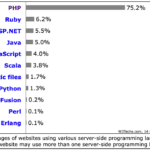How we help our Clients for Web Development Services
By: Digitize Info System
Digitize Info System is helping their clients with web development services since 2012. Which involves a systematic approach to ensure their needs are met effectively and efficiently. Below are the key steps through which Digitize Info System is providing excellent web development services to their clients.
1. Understanding Client Requirements
- Initial Consultation: Meet with the client to understand their business, target audience, goals, and specific requirements for the website or web application.
- Requirement Gathering: Collect detailed information about the features and functionalities they want, preferred design elements, and any specific technologies they want to use.
2. Planning and Proposal
- Project Scope: Define the scope of the project, including deliverables, timelines, and milestones.
- Cost Estimation: Provide a detailed cost estimate, including development, design, hosting, and maintenance fees.
- Proposal: Draft a proposal outlining the project plan, timeline, cost, and terms of service.
3. Design and Prototyping
- Wireframes: Create wireframes to show the basic structure and layout of the website.
- Design Mockups: Develop high-fidelity mockups of the website design, incorporating the client’s branding and design preferences.
- Client Feedback: Present the wireframes and mockups to the client for feedback and make necessary revisions.
4. Development
- frontend Development: Convert the design into a functional user interface using HTML, CSS, and JavaScript.
- backend Development: Develop the server-side logic, database interactions, and application functionalities using appropriate programming languages and frameworks.
- Content Management System (CMS): Set up and customize a CMS like WordPress, Drupal, or Joomla if the client needs it for easy content updates.
5. Testing and Quality Assurance
- Functional Testing: Ensure all features and functionalities work as intended.
- Compatibility Testing: Test the website across different browsers and devices to ensure compatibility.
- Performance Testing: Optimize the website for speed and performance.
- Security Testing: Implement security measures and conduct vulnerability assessments.
6. Deployment
- Hosting Setup: Set up the hosting environment and configure the domain.
- Deployment: Deploy the website or web application to the hosting server.
- Final Testing: Perform a final round of testing on the live server to ensure everything works correctly.
7. Training and Support
- Client Training: Provide training to the client on how to use the CMS, update content, and manage the website.
- Documentation: Provide comprehensive documentation covering all aspects of the website’s operation.
- Ongoing Support: Offer ongoing support and maintenance services to address any issues, perform updates, and make improvements as needed.
8. Marketing and SEO
- SEO Optimization: Optimize the website for search engines to improve visibility and rankings.
- Digital Marketing: Offer additional services like content marketing, social media management, and pay-per-click advertising to help drive traffic to the website.
9. Feedback and Continuous Improvement
- Client Feedback: Regularly gather feedback from the client to understand their satisfaction level and areas for improvement.
- Continuous Improvement: Use the feedback to make continuous improvements to the website and the services offered.
Tools and Technologies
- Project Management: Tools like Trello, Asana, Jira, Freedcamp to manage tasks and timelines.
- Communication: Regular updates and communication through email, video calls, and project management tools.
- Version Control: Use Git for version control to track changes and collaborate effectively.
By following these steps and maintaining clear communication with clients, we can ensure that the web development services provided are tailored to their needs, delivered on time, and exceed their expectations.



